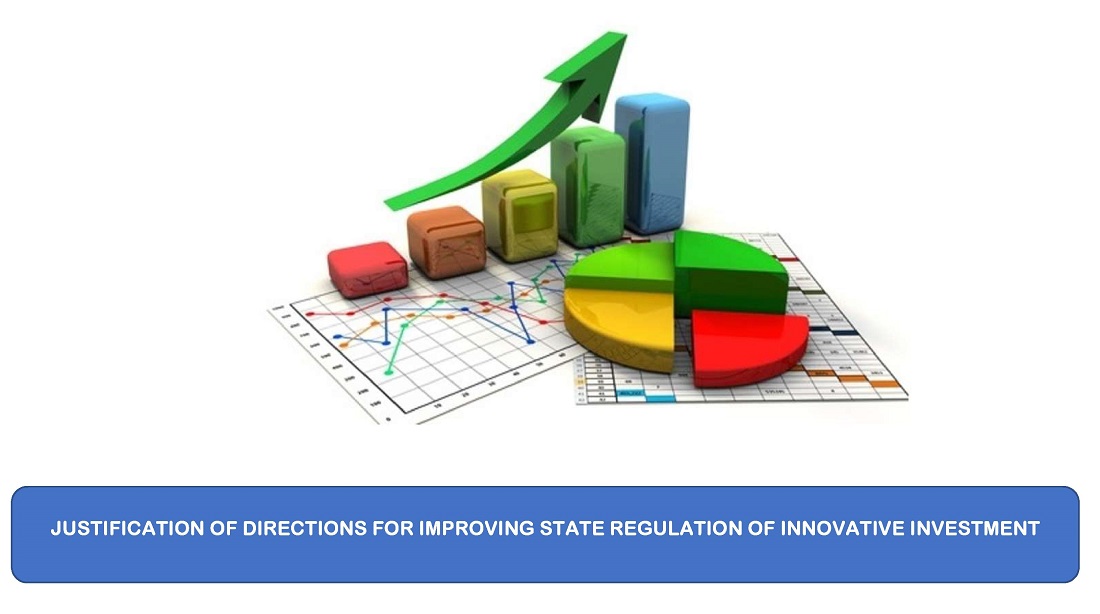Justification of directions for improving state regulation of innovative investment
DOI:
https://doi.org/10.15587/1729-4061.2023.294761Keywords:
innovative investment policy, innovative investment, regulation of innovative activity, innovation supportAbstract
The object of this study is the regulatory measures used within the framework of innovation and technology investment support. For the purposes of the study, existing approaches to determining the essence of state regulatory policy in the field of innovative investment were summarized. The existing techniques and procedures for stimulating and supporting innovative investment were studied, their advantages and disadvantages were determined. It was established that the existing systems of support for innovative investment do not fully meet the needs of participants in the innovation process and subjects of technology transfer. The expediency of improving the existing methods of normative consolidation of regulatory policy in the field of innovative investment was substantiated. The general structure of the state policy of innovative investment with its subject and subject composition, as well as forms of innovative investment, is proposed. The expediency of the formation of the state policy of innovative investment as a system of means, techniques, methods of stimulating and limiting the influence of state and local authorities, international institutions on social relations related to the implementation of innovative investment was substantiated. Also, directions for improvement of current international agreements and contracts in the field of innovative relations and acts of national legal systems were formed.
The research is aimed at forming general theoretical foundations for improving the regulatory system of innovative investment. The generated research results can be used in the formation of international normative acts, acts of national legislation, and serve as a basis for further scientific research on these issues
References
- Vasylchuk, I., Izmaylova, N., Smyrna, O., Petrishyna, T., Slusarenko, K. (2021). Access to Finance as a Driver Innovation. SHS Web of Conferences, 100, 01020. doi: https://doi.org/10.1051/shsconf/202110001020
- Telnova, H., Petchenko, M., Tkachenko, S., Gurzhiy, T., Pyrohov, S. (2022). Factors of venture capital investment activation. Financial and Credit Activity Problems of Theory and Practice, 2 (43), 46–52. doi: https://doi.org/10.55643/fcaptp.2.43.2022.3591
- Andrijauskiene, M., Ioannidis, D., Dumciuviene, D., Dimara, A., Bezas, N., Papaioannou, A., Krinidis, S. (2023). European Union Innovation Efficiency Assessment Based on Data Envelopment Analysis. Economies, 11 (6), 163. doi: https://doi.org/10.3390/economies11060163
- Yevtushenko, V., Sviezhentsev, O. (2018). Components of state innovative policy and the mechanism of its implementation in the measurement of the world experience. Bulletin of V. N. Karazin Kharkiv National University Economic Series, 94. doi: https://doi.org/10.26565/2311-2379-2018-94-05
- Fajri, R. F., Syamsul Maarif, Yuli Subiakto, Pujo Widodo, Kusuma. (2023). Japan’s Technology Investment Strategy And Innovative Approach To Enhancing Resilience And Sustainable Development In Indonesia. International Journal Of Humanities Education and Social Sciences (IJHESS), 3 (2). doi: https://doi.org/10.55227/ijhess.v3i2.593
- Catea, R.-M. (2022). EU crowdfunding regulation. Challenges of the Knowledge Society, 104–108. Available at: http://cks.univnt.ro/download/CKS_2022.pdf
- Marhasova, V., Garafonova, O., Sakun, O., Fedorenko, A., Yankovoi, R. (2021). Financial instruments of stimulation of investment activity: foreign aspect. Financial and Credit Activity Problems of Theory and Practice, 4 (35), 121–128. doi: https://doi.org/10.18371/fcaptp.v4i35.221841
- Regulation (EU) 2021/695 of the European Parliament and of the Council of 28 April 2021 establishing Horizon Europe – the Framework Programme for Research and Innovation, laying down its rules for participation and dissemination, and repealing Regulations (EU) No 1290/2013 and (EU) No 1291/2013 (Text with EEA relevance). Available at: https://eur-lex.europa.eu/eli/reg/2021/695
- Davydiuk, O., Shvydka, T., Ostapenko, I., Yurovska, V., Bytiak, O., Senyk, Y. (2023). Directions for improving the status of startups in the technology transfer system. Eastern-European Journal of Enterprise Technologies, 3 (13 (123)), 111–120. doi: https://doi.org/10.15587/1729-4061.2023.282762
- The Measurement of Scientific, Technological and Innovation Activities. doi: https://doi.org/10.1787/24132764
- Regulation (EU) 2020/1503 of the European Parliament and of the Council of 7 October 2020 on European crowdfunding service providers for business, and amending Regulation (EU) 2017/1129 and Directive (EU) 2019/1937 (Text with EEA relevance). Available at: https://eur-lex.europa.eu/eli/reg/2020/1503/oj
- Hospodarskyi kodeks Ukrainy. Zakon Ukrainy vid 16 sichnia 2003 roku, No. 436-IV. Available at: https://zakon.rada.gov.ua/laws/show/436-15#Text
- Pro innovatsiynu diyalnist. Zakon Ukrainy vid 04 lypnia 2002 roku, No. 40-IV. Available at: https://zakon.rada.gov.ua/laws/show/40-15#Text

Downloads
Published
How to Cite
Issue
Section
License
Copyright (c) 2023 Bohdan Hnatkivskyi

This work is licensed under a Creative Commons Attribution 4.0 International License.
The consolidation and conditions for the transfer of copyright (identification of authorship) is carried out in the License Agreement. In particular, the authors reserve the right to the authorship of their manuscript and transfer the first publication of this work to the journal under the terms of the Creative Commons CC BY license. At the same time, they have the right to conclude on their own additional agreements concerning the non-exclusive distribution of the work in the form in which it was published by this journal, but provided that the link to the first publication of the article in this journal is preserved.
A license agreement is a document in which the author warrants that he/she owns all copyright for the work (manuscript, article, etc.).
The authors, signing the License Agreement with TECHNOLOGY CENTER PC, have all rights to the further use of their work, provided that they link to our edition in which the work was published.
According to the terms of the License Agreement, the Publisher TECHNOLOGY CENTER PC does not take away your copyrights and receives permission from the authors to use and dissemination of the publication through the world's scientific resources (own electronic resources, scientometric databases, repositories, libraries, etc.).
In the absence of a signed License Agreement or in the absence of this agreement of identifiers allowing to identify the identity of the author, the editors have no right to work with the manuscript.
It is important to remember that there is another type of agreement between authors and publishers – when copyright is transferred from the authors to the publisher. In this case, the authors lose ownership of their work and may not use it in any way.









